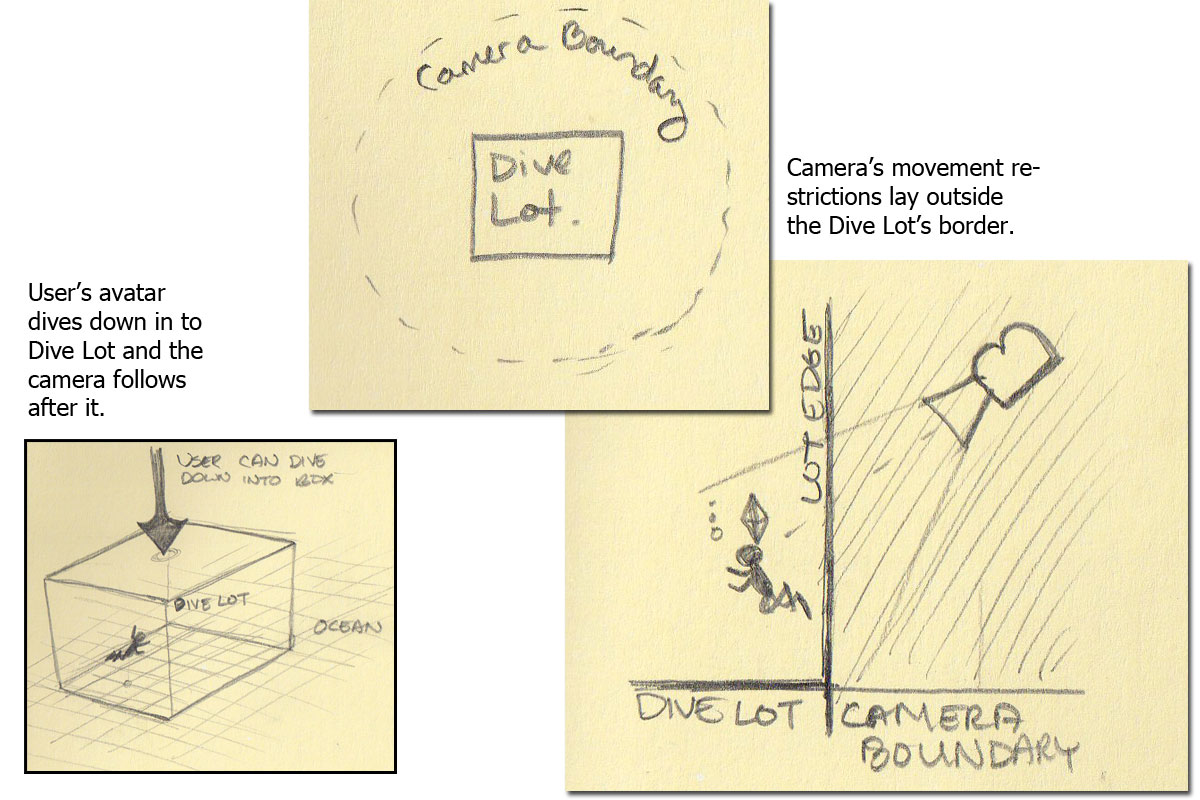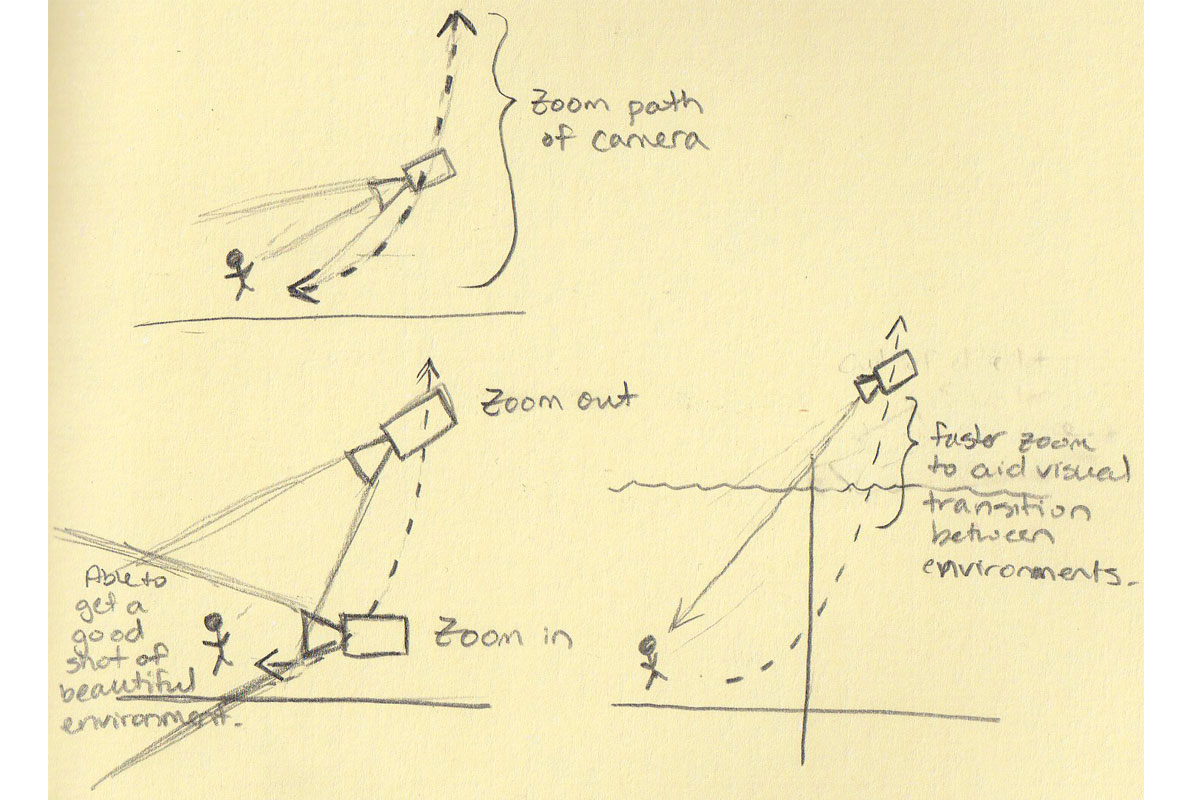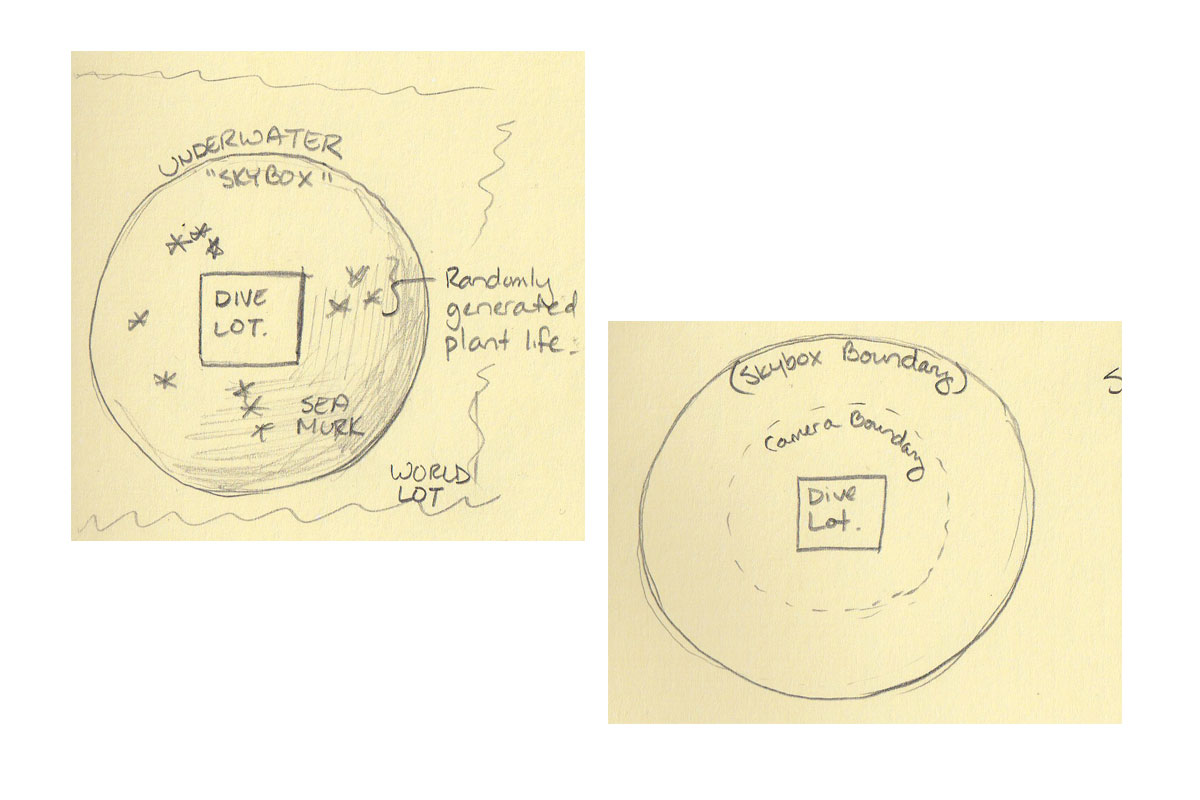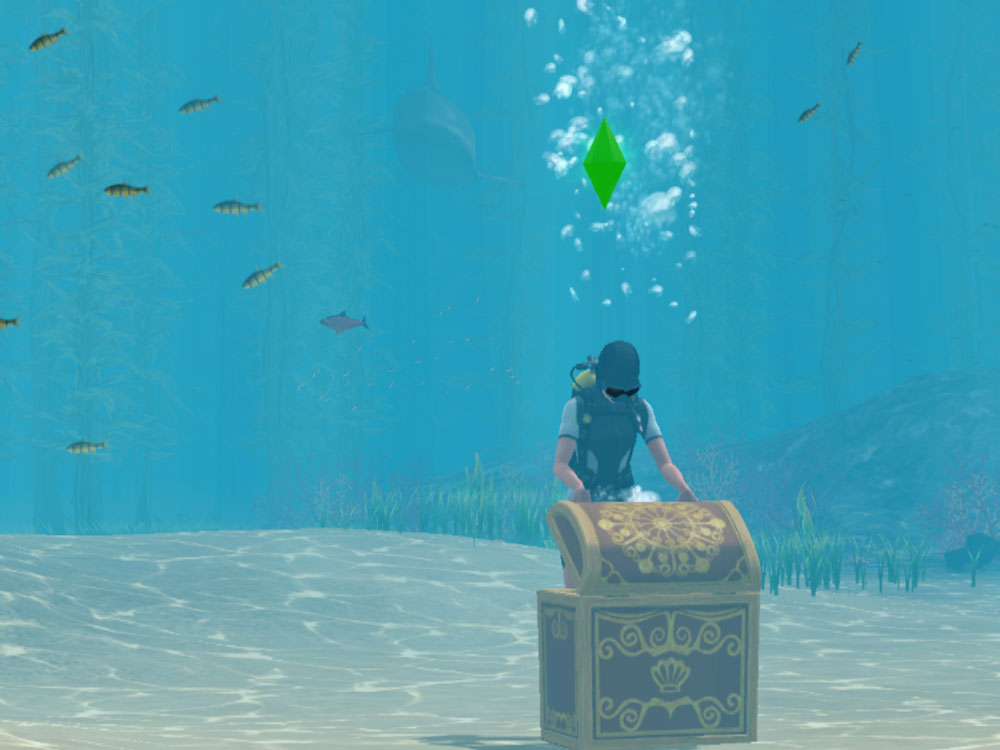Scuba Diving in The Sims 3
EA - Maxis Studio | 2013
PC/Mac Game
Background
In 2013, EA Maxis released its latest Expansion Pack for The Sims 3: Island Paradise. Island Paradise expanded on the base game by adding features themed around "island life”, including the ability to scuba dive.
Underwater exploration was a completely new functionality in the game. The goal was to allow exploration of the vast underwater terrain of a Sims 3 world, but due to technical limitations, had to be restricted to designated lots located in the ocean.
Despite this restriction, we wanted to make sure the user experience of scuba diving in The Sims 3 felt intuitive to the user and visually vast to promote the idea of exploration.
Key Highlights
- Fluid camera controls made movement underwater intuitive while restricting the user to the spatial limitations of an underwater lot. It also allowed for fluid access in and out of water
- Visually conveys an expansive world in a restricted space through the use of environment fading, procedurally generated plant life, and making the world outside the explorable lot sparse so as to keep the user focused on the accessible areas
About EA Maxis
Electronic Artse (EA) acquired Maxis in 1997, rebranding it into the internal studio, EA Maxis (now part of EA Mobile). EA Maxis is best known for its simulation-style games, such as The Sims, SimCity, and Spore.
About The Sims 3
The Sims 3, released in 2009, is a simulation game that allows players to play with life by controlling Sims (in-game people) and manipulating their relationships and environments. With the addition of purchased Expansion Packs, players can expand their gameplay with new features, such as seasonal weather (The Sims 3 Expansion Pack: Seasons) or scuba diving in the ocean (The Sims 3 Expansion Pack: Island Paradise).
Process
This project was an exercise in less is more. The less visible the controls for underwater diving were, the more immersed the user could be in the actual gameplay.
Camera movement was the biggest issue with creating an underwater world. With the smaller size of the scuba lots, restricting the camera to stay within the lot limited visibility too greatly. The solution was to create a margin outside the dive lot where the camera could enter.

While the camera's parent was restricted to the dive lot, the camera could be moved past the boundaries, allowing users a wider view

When zooming the camera in and out of water, this added margin allowed the camera to easily pass through the barrier when zooming in on an avatar close to the dive lot's edge

Placement of the underwater skybox and random sea life helped keep the underwater illusion even when the camera was out-of-bounds
To create the illusion of an expansive underwater world, the lots were designed to have most of the underwater objects placed towards the center of the lot to drive user attention there. Looking outwards, visibility slowly fades to the “seabox” boundary through the use of murk and other particle effects. Randomnly generated plantlife also smooths the visual transition from the dive lot to the area past its borders.

View from outside of the dive lot borders behind a patch of randomly-generated plant life

Particle effects, caustics, sea life, and sea murk creates the illusion of a vast and expansive underwater world to explore